SaaS is a hectic industry. It’s an ever-growing, straight-talking, constantly innovating world of solutions that help people and businesses do better, every day. That’s why we love it.
And if you’re an entrepreneur, you’ll also love the fact that it’s a market worth billions of dollars that is literally taking over the world.
Perhaps you have an idea for a SaaS product, and you’re looking for resources to help you put your ideas into action and get the wheels turning. It’s been a crazy year, but technology is still moving and you don’t want to get left behind.
We’ve put together some helpful SaaS business strategies, plans, and advice to help you with setting up your business and planning the scale-up journey.
Let’s get started.
Define: SaaS Business
SaaS (software as a service) products play an important role in our personal and professional lives.
It’s a market worth $105 billion in the US alone and it grows by 30% each year. If you’re an ambitious entrepreneur, that’s all you need to hear.
SaaS businesses stretch across all industries, from music to team management to healthcare, so you’ll find innovative software solutions in every specialized sector and niche.
So, how do we know something can be classed as software as a service?
SaaS is a software product that…
- Is accessed via an online platform or app
- Solves a particular problem
- Targets a particular group of people
- Uses a subscription model
We have cloud computing to thank for the evolution of SaaS businesses.
It’s a simple concept nowadays – software is stored and maintained in the cloud, and businesses pay for access to this software.
But it’s taken some serious technological advancement to get here, a point where high-performance software is readily available to anyone with an internet connection.
I’ve got a simple (maybe too simple) analogy for explaining SaaS businesses compared to other, older, methods of software use. You can use it when your parents ask you why you’re moving out of their cup noodle-littered basement and into your super yacht.
Let’s say you want a pizza. Because let’s be honest, everyone wants a pizza, all of the time. I’m so hungry, man.
You have two options:
- Planting some wheat
- Picking up the phone
You could buy a farm. You plant all your crops and take care of all your livestock. You harvest the grains, store them, and grind them to make flour. Etcetera. You now have all the ingredients required to make a pizza – all from your own premises.
This is like “On-Premise” software. It’s installed, stored, maintained, and run on-premises.
You could also call your local pizza place, order your favourite – Hawaiian, obviously – and enjoy a delicious pizza within half an hour. The quality is always good, you don’t have to know anything about yeast, and it’s pretty cheap.
This is SaaS. Fresh, hot, Hawaiian pizza, delivered to your device.
SaaS Vs. Legacy Systems
Businesses in every industry, if they weren’t already built with cloud-based software, are making the switch to SaaS from traditional legacy systems.
To your average business owner, particularly if they’re a boomer, legacy systems are what they’ve always known.
It’s a scary thing to learn that all data is now stored in ‘the cloud’, but they’re starting to realize that competitors are moving faster because they’re using more modern tools.
Take wealth management, for example. It’s an old industry and it’s often run by older people (who are very good at what they do and have decades of experience).
The thing is, a shocking amount of wealth management takes place using clunky, ancient legacy systems (I’m talking about the software, not the people).
Heck, billions of dollars in assets might be tracked using a mission-critical spreadsheet. Let’s say old wealth manager Joe presses the wrong button in Excel – beep boop, he’s lost his client’s data.
This is where SaaS businesses save the day. When presented with the pros and cons, it’s a no-brainer:
|
Legacy Systems |
SaaS |
|
|
Complexity |
Requires significant experience, training, and workarounds to use effectively |
Designed to be user-friendly and an exact match to requirements |
|
Price |
Significant up-front investment, ongoing maintenance, and extensions |
Affordable monthly or annual subscription model |
|
Agility |
Clunky, slow, and outdated |
Constantly improving and evolving |
|
Resource |
Requires an internal IT team, space for storage, and significant time for training |
No additional resources required |
|
Security |
All security handled internally including IT support, heightened on-premise security, and back-up storage in another location |
All security handled by a global business with specialized 24/7 monitoring |
|
Risk |
Increased risk of data loss and security breach due to theft, natural disaster, hacking, etc. |
Less risk due to scale and specialization of the SaaS business |
In every industry – banking, beauty, education, finance, music, travel – SaaS businesses are riding the wave of cloud computing to offer businesses (and consumers) a far more advanced tool that is much simpler to use and, critically, far cheaper to run.
So, Mr/Ms. Entrepreneur, what kind of SaaS are you going to sell?
What Is Your SaaS Business Going To Look Like?
When mapping out a SaaS strategy for your startup, there are some fundamental parameters that should be in place.
- Solving a specific problem
- Catering to an audience you know and respect
- Pricing that demonstrates value
Your SaaS product is only going to be valuable if it solves a real, tangible problem for people. A problem that is so crucial that the solution is an urgent requirement.
At the most basic level, your SaaS business should be selling a product that helps other businesses make money.
Then there’s the audience for your SaaS business. You’ll get the best results from targeting a group of people that you know very well and, most importantly, that you respect.
Why? Because, if you want to succeed, you’re going to have to talk to them. A lot.
Now, price is obviously an essential factor because that’s how you make a seamless transition from your current clunker to a golden lamborghini. But it’s also how people perceive the value of your product.
If your product is valuable enough, if it truly solves a problem and helps businesses make money, they’ll be willing to pay for it.
Creating Your SaaS Business Plan
Okay, so you’ve got the concept for your SaaS business, you might have even started to dabble in development.
But you’ve got to get investors on board. To do that, you need a clear SaaS business plan that’ll persuade even the meanest dragon in the den that your product is the one.
SaaS Startup Business Plan: Traditional Vs. Lean
When you approach creating a business plan, you’ve got two options:
- Traditional Business Plan
- Lean Business Plan
A traditional business plan is a full-scale, 40-odd page manifesto that covers the following essential aspects of your SaaS business.
|
Section |
What It Does |
|
Executive Summary |
The elevator pitch about you, your SaaS business, and your product |
|
Company Description |
The ‘why we exist’. Company mission statement, values, culture, and other warm fuzzy stuff goes here. |
|
Market Analysis |
Demonstrating your knowledge of the market, it’s value, the gap you’ve identified, the target audience, the problem you’ll solve. |
|
Organization Structure |
All the legal stuff, who’s involved, where you’re based. |
|
The Product |
The easy part – explain what your product is, how it works, and why people should care. |
|
Marketing Plans |
Use data from your market analysis and demonstrate how you’ll target, attract, convince, and acquire customers using inbound and outbound marketing. |
|
Finances & Funding |
The part where you ask for money. Explain how much money is needed, where it will go, short-term and long-term requirements. |
By the end of it, you’ll have a very serious-looking document that’ll have you feeling like a very serious business person.
The thing is, this is quite an old school method of business planning that doesn’t suit the environment where SaaS thrives.
In this industry, the entire market will shift, new competitors will emerge, new technologies will be invented, all in the time it takes you to write a 50-page document to send to Peter Jones.
So how do SaaS businesses plan their growth strategy without pinning themselves down? A Lean business plan.
Why A Lean Business Plan Suits SaaS Businesses
You’ll still need to cover the essentials, but there’s more wiggle room around areas that are constantly changing in the SaaS world.
Lean SaaS Business Plan Template
|
Section |
What It Does |
|
Business Offering |
Explain the functions and offerings of your SaaS product |
|
Product Value |
Outline your USP and how your product beats the competition |
|
Audience Outline |
Present market research and customer persona |
|
Revenue Streams |
Explain your pricing model, subscription structure, revenue estimates |
As well as your SaaS business plan, you need to provide two things:
- Clear vision and goals
- Assurance of profitability
Showing clarity and decisiveness around your business goals not only gives your business direction and momentum but impresses potential investors who will share your confidence in your SaaS business.
Of course, confidence is all hot air without proof of profitability. Make sure you’ve defined a clear path to profit and know your numbers because that’s what it boils down to when gaining investors.
Understanding The SaaS Business Model
So, we’ve established that SaaS is not like other girls because it sits on the cloud and, instead of investing a ridiculous amount into on-premise tech, businesses pay a small fee to access the data on a subscription.
All the major hallmarks of selling a tech product go out the window with SaaS – no physical product, no end-user license, no infrastructure needed to host the software – just log in on a web browser and maybe an app download.
Therefore, the core business model of any SaaS business is recurring subscription fees.
One-off sales are no longer the goal, instead, the focus is on the lifetime value of a customer. There are a number of ways a SaaS business can grow to maximize revenue, such as up-selling, partnerships, and affiliate marketing, but the core moneymaker is the subscription.
This is where the value of your product is everything, and I’ll circle back to the essential ingredient – helping businesses make money.
Think of the top SaaS businesses out there right now: Salesforce, Monday, Zendesk
If your software product is valuable enough, a business will:
- Use it for vital business activity – from task management to CRM organization to selling products
- Start building processes around the program – so even if a competitor comes along, they’ll stick to what they’ve been using
- Become reliant on the service it provides
- Pay just about anything to continue using and benefitting from it
SaaS leaders have cracked this code – and you can too, but there are many challenges to overcome (and that’s if your product is decent).
The SaaS business model sounds relatively straightforward, but it comes with many challenges. Let’s go over them:
|
SaaS Business Pros |
SaaS Business Cons |
|
Customer loyalty and retention |
Requires massive investment in developers and marketing early on in the piece |
|
You retain ownership of the product |
Any early profit must be reinvested to scale-up |
|
Explaining the value of your product (and how it works) can be difficult |
Yikes. No wonder 92% of SaaS startups fail. That super yacht looks so far away when you’re deep in the Valley of Death, running through the last of your capital, and desperately pitching to investors while sleeping on your friend’s couch.
Knowing Your SaaS Business Has Made It (Key Metrics)
So, how do you know if you’ve made it? What are the SaaS marketing metrics for success if you’re running a SaaS business?
Let’s run through them. You should know these figures off the top of your head when you’re approaching investors.
- Churn
- Customer acquisition cost
- Monthly recurring revenue
- Average revenue per account
- Customer lifetime value
- Customer retention rate
Churn
Churn is the most powerful metric for measuring SaaS success.
Customers will inevitably unsubscribe, whether it’s because they’ve found a better solution, they can’t afford the subscription, or they simply no longer need your product.
To calculate churn for a specific period, simply divide the number of unsubscribed customers by the total number of customers.
If your churn rate is increasing each month, you know you’ve got a problem.
Customer Acquisition Cost (CAC)
This is a great indicator for profit.
Divide the total cost in marketing and sales by the number of acquired customers.
Monthly Recurring Revenue (MRR)
A simple way to predict incoming revenue so you know how you’re tracking, without taking into account fluctuations in churn and customer acquisition. Multiply the number of customers by the average revenue each month.
Average Revenue Per Account (ARPA)
The average revenue acquired from one client each month or year. Calculated by dividing the total MRR by the number of customers.
Customer Lifetime Value (CLV)
This one’s a bit more complicated, but it’s one of the most important SaaS business metrics to track. It represents the average amount of revenue you can squeeze out of customers for the amount of time they stay with your company. Multiply the average revenue per account by the percentage gross margin, then divide it by the average churn rate.
Customer Retention Rate (CRR)
This just shows how many customers have stuck to using your software over time, proving the success of your marketing efforts and the value of your product. Divide the number of customers currently using the software by the total number of customers at the start of the specific time period, then multiple by one hundred to get the percentage.
The Marketing Approach To SaaS
You’ve developed your SaaS business plan, you know it like Chewbacca knows the Millennium Falcon, and you’re ready to send that sh*t into hyperspace.
SaaS growth is serious business. Every SaaS company navigates it differently, but it tends to look like the following stages:
|
Stage |
Name |
Definition |
|
1 |
Startup |
Getting everything together, developing your MVP, preparing to ‘go to market’ |
|
2 |
Hypergrowth |
The market responds well, which is awesome. But the rapid growth places huge demands on resource for development, storage, and further technicalities to get your product to where it needs to be. |
|
3 |
Stable / Golden Goose |
Everything starts to relax, you don’t need to run around amping up developments and making rapid updates. You’re acquiring customers at a steady rate, but churn becomes your focus. |
When it comes to growing your SaaS business, you need a killer SaaS go-to marketing strategy.
This is obviously our area of expertise, so we’ll share our top SaaS marketing strategies and show you how to tackle the challenge of attracting customers with marketing.
Build Your Audience First
To truly master SaaS marketing, you should be thinking about it right at the start of your startup journey.
Before you start perfecting and developing your MVP, we highly recommend you start investing in your marketing essentials, including:
- Website
- Social media profiles
- Blogs
- Email marketing campaigns
- Product demonstrations
We’re not suggesting you invest in an inbound marketing agency right at the start, that wouldn’t be wise at all, you need that early capital.
But simply investing time and some resource into your marketing essentials, particularly your website, helps you build your audience alongside product development.
This helps you achieve a number of things:
- Test your USP
- Increase awareness of audience pain points
- Establish a relationship with your ideal customers
- Develop your brand voice
- Build anticipation for your product launch
By keeping marketing in mind from day dot, you save yourself from crafting an entire brand personality at a time where your product is ready and marketing should just plug and play to get the results you want.
It might mean doing a fair amount yourself, from writing the odd blog to posting on LinkedIn and setting up a mailing list.
For example, this fintech startup has been publishing high-quality blog content on its beautiful website since way before they started scaling up this year.
This means that, by the time they hit the hyper-growth phase and customer acquisition skyrockets, they’ve got a goldmine of epic content ready to make sure none of that organic traffic goes to waste.
Outbound vs. Inbound SaaS Marketing
Okay, so you’ve figured out how to start a SaaS business. You’ve got your MVP ready to go, some investors on board, and it’s time to start building an online presence to attract customers.
You know this means marketing, and you know that costs money, but you’re unsure how to best use allocate your funds to maximize results. The last thing you want to do is throw all your marketing spend at an ineffective campaign.
When it comes to B2B SaaS marketing, you’ve got two methods:
- Outbound marketing
- Inbound marketing
Outbound marketing uses tactics that directly target your audience, reaches into their day to day world, and initiates a conversation.
Traditional forms of outbound marketing involve radio ads, infomercials and those insidious cold calls at dinner time that provoked your Dad to swear in your presence for the first time.
Today, outbound marketing is all about social media and Google Ads. Companies pay to have their content displayed in front of users who Google, Instagram, LinkedIn, or Facebook recognize as belonging to their target audience.
Outbound marketing had a bad reputation for being manipulative and too in-your-face, which says a lot about a society that is sick to death of looking at advertisements. I mean, 81% of people will close their browser due to a pop-up ad.
But outbound marketing can be useful for businesses, particularly startups who need some traction with their online presence. It’s a useful way to track ROI – you pay a certain fee and get a certain amount of engagements.
Then there’s inbound marketing. Inbound marketing tactics are subtle – where outbound deals in flashy fonts, inbound provides education, subtlety, and value.
Rather than selling your SaaS product outright, inbound marketing educates your audience about the product and topics relating to it – how it works, how it solves a problem they face, what they can achieve with it, why it’s better than other products, why they should care about it.
Rather than persuading people to ‘buy now’, inbound marketing methods seek to gently steer your audience towards your product and showcase it’s value – with the goal that they’ll know where to find you when they need the product.
The most powerful form of inbound marketing is SaaS content marketing – words that work wonders for your business.
Inbound marketing is highly valuable to B2B SaaS for numerous reasons:
- SaaS products require more explanation for people to understand their value
- B2B customers take longer to make decisions so need more to read
- B2B decisions require discussion so need well-researched content
- SaaS relies on recurring revenue so customers need consistent value from content
There are many SaaS inbound marketing examples out there, all of which demonstrate the long term ROI that comes from building a goldmine of valuable content for your audience.
What’s more, SaaS inbound marketing is far more strategic. Different tactics and types of content can be engaged to guide leads down the marketing funnel to the point where they make the decision to purchase.
The SaaS Marketing Funnel
In every B2B SaaS marketing and lead generation guide, you’ll learn about the marketing funnel.
Basically, the funnel maps out every stage in a buyer’s journey from just noticing your product, to buying it and raving about it.
At its most basic level, the B2B SaaS marketing funnel has three stages:
- Awareness
- Consideration
- Decision
By taking the time and using your knowledge of your customer persona, buyer journey, and your product, you can create an inbound marketing strategy that leverages the right content to attract customers at each stage of the marketing funnel.
Like this:
|
Stage |
Definition |
Content Marketing Tactic |
Example |
|
Awareness |
Customers first discover your business and have no knowledge of what you do or what your product is. To progress, they need to be educated about the product, the pain points it solves, and self-identify themselves as a potential customer. |
Blogs |
|
|
Consideration |
The customer is aware that a solution to their problem exists, but isn’t sure which one to choose. Your content should prove that you’re the best option. |
Case study |
|
|
Decision |
Your product is positioned as the best option, leads just need one final push to envision their lives being improved by this product. |
Explainer video |
With a future-proof inbound marketing strategy and a team of SaaS marketing experts by your side, your scale-up journey can be supported by high-value content that takes care of new leads and turns them into sales.
Conclusion: Let’s Get Down To Business
Let’s face it, inbound marketing is a serious long-term investment. To build a goldmine of content to nurture your leads, you’re gonna need a serious amount of high-quality blogs, case studies, landing pages, and videos.
If you’re an entrepreneur who’s just figuring out how to start a SaaS business, you likely won’t be able to hire an inbound marketing agency for a little while.
But that doesn’t mean we can’t help out. We want to support entrepreneurs looking to take SaaS further with solutions that’ll shape the world we live in tomorrow.
That sounded pretty cheesy, but we mean it. If you’re putting together inbound marketing strategies for your SaaS startup, let’s talk.

Chris Onyett
Chris is one of the managing partners at Roketto. His area of expertise is digital marketing and loves sharing and educating on topics like Google Ads, CPC bidding tactics, Google Analytics, and marketing automation. When Chris isn't in the office, he enjoys playing volleyball, mountain biking, and hiking with his American Eskimo.












2.png)
2.png)









